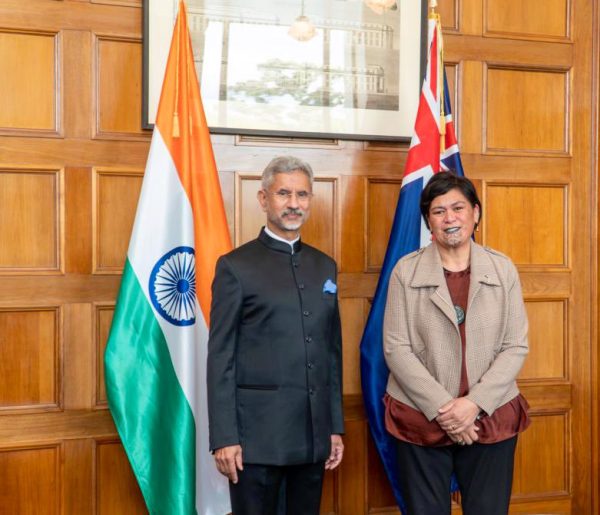Launch of SLBM and Indian Underwater Deterrent
THE INDIAN EXPRESS
APLN member C Uday Bhaskar writes: Exaggerated claims of India having arrived as a military power must be kept on hold. Read the original article here.
Exaggerated claims of India having arrived as a military power must be kept on hold. Restraint in relation to announcements and claims about strategic capability burnishes deterrence in a quiet but effective manner.
On October 14, India joined a select group of nations when it announced the successful launch of an SLBM (submarine-launched ballistic missile). The other six nations that have demonstrated similar underwater capability include the five permanent members of the UN Security Council — Russia, the UK, France and China. In August 2016, North Korea claimed a successful launch of an SLBM.
The Defence Ministry’s press release noted: “The missile was tested to a predetermined range and impacted the target area in the Bay of Bengal with very high accuracy. All operational and technological parameters of the weapon system have been validated.”
This achievement is significant in the context of India’s strategic profile. The navy, DRDO and other agencies who have enabled this success should be commended. While the October 14 launch validates the credibility of the Indian underwater deterrent, it must be added that this is still a “work in progress”.
A credible underwater deterrent is perceived as being invulnerable to detection and hence nations with the capacity can deliver a retaliatory second strike – this enhances their deterrence capabilities. While the press release is sparse in providing technical details or confirming the range of the SLBM, its assertion that the missile impacted the target area “with very high accuracy” is, nevertheless, instructive. This would indicate that the crew of the INS Arihant and the entire HR (human resource) comprising the pyramid from the SFC (strategic forces command) going right up to the national command authority with the Prime Minister at the apex have acquired the necessary proficiency to launch an SLBM – should the exigency arise.
In a dialectical manner, the credibility of deterrence ensures that such an exigency will not arise.
India can be justifiably proud of having acquired and demonstrated this level of competence, but this achievement needs to be located objectively. An SSBN (a nuclear-propelled submarine armed with a nuclear-tipped ballistic missile) is deemed to be the ultimate deterrent and this profile of macro-lethality and zero error credibility is predicated on the robustness of the “boat” and the efficacy of the missile.
One element of this credibility was announced in November 2018 by PM Modi who tweeted: “India’s pride, nuclear submarine INS Arihant successfully completed its first deterrence patrol!” In essence, the credibility of the boat to carry out such a patrol had been established.
However, the “ballistic” profile of the SLBM launched on October 14 remains modest and this is evident from the characteristics associated with the 6,000-ton Arihant. It is reportedly fitted with the K -15 SLBM, which has a range of 750 km and this would be classified as a short-range missile.
In January 2020, India successfully tested the 3,500-km range K4 SLBM from a submerged pontoon off the Andhra coast and it was reported that “all technical parameters were satisfactorily met”. At the time government sources confirmed the K4 success and added that the CEP (circular error probability) was “more sophisticated than Chinese missiles”.
It, therefore, seems that India is working resolutely to arm the Arihant with a 3,500 km missile and this would be deemed to be an IRBM (intermediate-range ballistic missile). The next stage would be for India to successfully arm its SSBN with a missile whose range is in excess of 5,000 km – which would qualify as an ICBM (intercontinental ballistic missile). That is the stage when India would be deemed to have acquired the requisite level of strategic capability to “validate the SSBN programme, a key element of India’s nuclear deterrence capability ” – as indicated in the October 14 press release.
Acquiring the desirable level of holistic SLBM proficiency in the entire pyramid – from the boat (SSBN) to the national command apex – is a long and arduous journey. It merits recall that China became nuclear weapon capable in 1964 and carried out its first SLBM test (the J-1 with a range of 1700 km) in 1982. Over the years, the PLA Navy had its own techno-strategic challenges with nuclear-propelled submarines and was able to test a 9,000 km missile only in 2018. It is understood that a fully armed Chinese SSBN that would be deemed to be operational to undertake a credible deterrence patrol is scheduled for mid-2025.
Acquiring the optimum degree of nuclear deterrence is imperative for India, given its distinctive spectrum of security and strategic challenges. India has made slow but steady progress in its missile programme, nuclear weapon capability, the nuclear submarine and more recently the building of an aircraft carrier. But all these capabilities remain a “work-in-progress”. It wouldn’t be wrong to say that India is in a “complex chrysalis phase” as far as the maritime domain is concerned. The nation has an indigenously designed and built aircraft carrier (INS Vikrant) but is handicapped by not having the appropriate fighter aircraft and an SSBN whose ICBM capability is some years away.
Currently, the global geopolitical domain is in a state of flux and the US-China contestation amongst other issues will roil the waters. The outcome of the war in Ukraine and the orientation of the Delhi-Moscow relationship will have a bearing on India’s strategic programs.
Thus the reality is that while each achievement is creditable in its own respect, exaggerated claims of India having “arrived” as a major military power ought to be kept on hold. Restraint in relation to announcements and claims about strategic capability burnishes deterrence in a quiet but effective manner. Walking softly, while wielding a big stick is desirable as a national trait.
Image: Reuters




